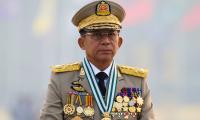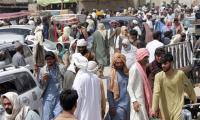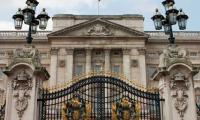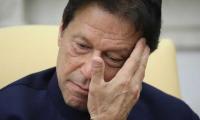Both terrorism and poverty cause deaths in different ways. Terrorists use bullets, Ak47s, suicide jackets and other means to kill and frighten people. But poverty is a silent killer. F
First, terror struck in Quetta and Parachinar and killed nearly 90 innocent people including policemen. Second, the inferno near Ahmed Pur East, in district Bahawalpur, killed nearly 180 and seriously injured more than 100 people. This tragedy took place when poor and ignorant people were collecting petrol from an overturned oil tanker.
The purpose of the terrorists is clear; they want to create the sense of fear and instability. They want to prove that they still can cause destruction and mayhem. Two terrorist attacks sparked discussion on the forgotten National Action Plan (NAP). In the last few months, both the government and the opposition parties have focussed mainly on Panama Case and JIT.
We only focus on religious extremism, intolerance and terrorism when they strike. Much attention has been focussed on militarily wiping out and destroying terrorist groups and organisations, but little been done to build an alternate narrative to counter extremist views and narratives. Half-hearted efforts will not bring the desired results. No serious effort so far has been made to create and build a counter-narrative to defeat extremist and violent ideas and thoughts.
Now move on to the second tragedy. It was surprising to see that the deaths in this inferno failed to bring the attention of the mainstream media to the socio-economic conditions of the victims. It failed to spark a sharp discussion on poverty, education and social consciousness. Many in the media continue to blame the victims. For them, the greed and lust of the people for a few litres of petrol was responsible for these avoidable deaths. Opinion is bitterly divided on social media.
Opposition politicians are accusing the government for failing to provide basic health facilities in this area. Even though the same politicians are part of the ruling elite that is responsible for creating the conditions for abject poverty, deprivation and lack of basic services and utilities.
The existence of a burn unit and availability of proper healthcare in the area could have saved many lives. The inferno and the consequent tragedy exposed the basic infrastructure that exists in this area and in most of southern Punjab. The lack of social awareness among the masses and the lack of commitment on the part of local authorities caused so many deaths that could have been avoided. Material conditions determine one’s social being and consciousness. Abject poverty and deprivation cannot produce a higher cultural level and civility.
Anyone who has ever been poor and still remembers the pain and miseries of old days surely knows how stressful it is. Worrying constantly about basic needs like food, shelter and utility bills.
Being poor is in itself a punishment, yet so many people do not seem to realise that and so they pile on. Their purpose seems to be to make poor people sorry that they were ever born. Many poor people already rue the day they were born into this world. So if you cannot help, at least don’t make matters worse for those people who are already suffering. If you have never been truly poor, then you have no idea how miserable poverty can be.
Addressing the underlying social and economic conditions that breed poverty and ill health – in other words, better policy, not better medicine – is the solution. Abolishing feudalism, introducing land reforms and making radical changes in economic policies can transform the lives of the poor.
Poor people die because they can’t get food, shelter, health care, homes. They can’t get food without toxins. They can’t get time off to supervise their children. They can’t spend money on safety and education.
It’s not polite to talk about that. We talk about the poverty rate or the poverty level or the poverty gap, not kids catching on fire and adults wasting away. We talk about economic development and markets and education, not the people who die each year coughing blood as tuberculosis takes over their body. They don’t die from tuberculosis. They die because they have no awareness about it. They even die when the government provides them medicines. They die because they live in unhygienic conditions and can’t afford decent food to survive.
It is easier to believe that poverty causes people to wear old clothes, live in small houses, or forego owning a television than it is to admit that the people on the bottom of the socioeconomic ladder often die early as a result.
Poverty hurts not just your body but also your soul. Poverty kills dreams. It murders hope. It squashes every last ounce of ambition. It impacts the old and targets the young. It steals more than full bellies and healthy bodies; it suffocates the future and squanders potential.
Sparking dreams in people’s hearts instils hope, and hope combats poverty. Hope reaches through the fog of disillusionment and despair. It opens people’s eyes to the possibility of a better future and shines light on the way forward. It bolsters courage to help make people believe they are not only capable, but also worthy.
Unfortunately, our ruling elite has failed miserably to create hope in the most downtrodden and exploited sections of society.
The writer is a freelance journalist.
Most SOEs such as PIA, may have a negative net worth too, based on their earnings potential
Fortunately, after a decade’s struggle with smog, Pakistani Punjab has understood the urgency of climate action
Recent COP29 summit underscored several emerging opportunities in global climate action
Rapid industrialisation of nations blurred once-clear lines between ‘developed’ and ‘developing’
Analysis of registered candidates reveals that many come from 15 districts affected by floods, poverty and poor...
US-Pakistan relations need to steer clear of the global power competition that dominates geopolitical landscape







